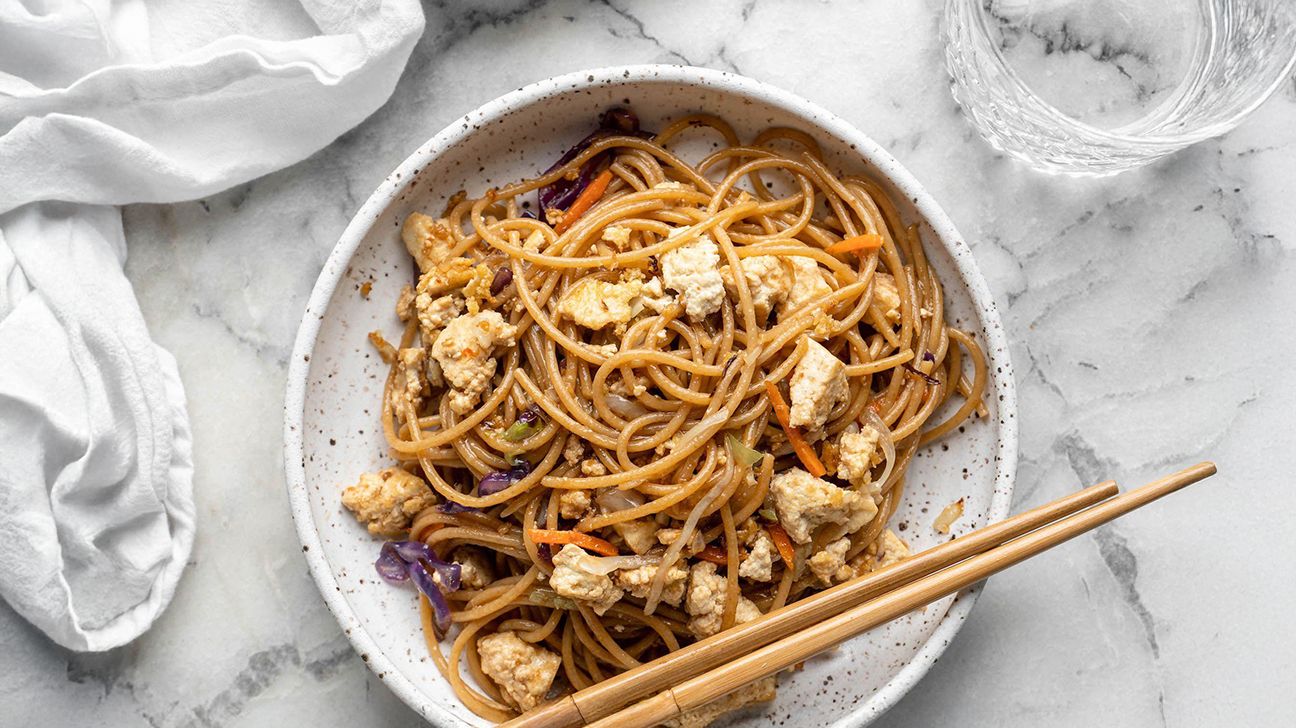Making a stir-fry is an easy way to prepare a balanced meal.
Most stir-fry recipes include a source of protein, non-starchy vegetables, and some type of carb. They’re usually coated in a delicious sauce and don’t take long to prepare.
Take-out stir-fries tend to be loaded with sodium and may be high in refined carbs like rice and noodles. Making them at home will give you more control over the ingredients so you can enjoy a healthier stir-fry.
Here are 5 healthy stir-fry recipes to try.

This vegetarian stir-fry can be made in under 30 minutes, perfect for a busy weeknight meal. The tofu is gently sauteed in sesame oil. The recipe calls for soba noodles. If you’d prefer, you can substitute them for regular pasta, gluten-free pasta, ramen, rice noodles, or whatever your heart (and dietary needs) require!
This stir-fry features chicken and is chock full of green veggies! It’s got broccoli, bok choy, and green onions. It’s topped with sesame seeds for a little crunch. This meal will likely keep you full for awhile, as it has 35.9 g of protein per serving. It also has 4.6 g of fiber, which will help you stay satiated.
This vegan stir-fry includes edamame as a source of protein, and has 22.3 g per serving. It also has carrots and cabbage mixed in with the soba noodles. It’s all topped with an orange citrus dressing, which includes miso, soy sauce, and rice vinegar.
This seafood coconut stir-fry has 363 calories per serving. The curry flavor and fish sauce compliment the bell peppers, carrots, and onions. It’s drizzled with lime when plated to give it a little citrus kick. This stir-fry doesn’t call for noodles, but you could add the noodle of your choice if you’d like!
This pork soba stir-fry can be made in under 30 minutes, and has a total of 6 ingredients. It uses frozen vegetables, which is a great way to still get nutrients while also saving some prep time. This recipe is lower in sugar, and contains 7.1 g per serving.
Tips for making stir-fry
- Use oils that can withstand high heat, like avocado or peanut oil. Olive, canola, vegetable, and coconut oils will also work.
- If you’re watching your carb intake, be mindful of serving sizes when including rice or noodles.
- To add nutrients and extra fiber, use whole wheat pasta or brown rice. If you want a low carb or gluten-free option, try substituting zucchini noodles or cauliflower rice.
- If you’re watching your sodium intake, use reduced or low sodium soy sauce. Tamari and coconut aminos are gluten-free soy alternatives.
- Before serving a stir-fry, consider topping it with chopped cashews, toasted sesame seeds, or sliced green onions.
Stir-fries are typically made with veggies and protein, coated in sauce, and served over rice or noodles.
They’re also nutritionally balanced, easy to make, and highly customizable. Oftentimes, they can be made with ingredients you already have on hand.




